Back to homepage | About the Keynote Speaker | Program Schedule | List of Presenters | About the ISMAA | Read the Abstracts | Directions
Please feel free to browse the abstracts of the various presenters for the International Symposium on the Musical Arts of Africa. You can look through them all or jump to a specific abstract.
Oheneba Akwasi Abayie (Keynote Speaker) | Pedro Acosta | Charrise Barron | Lucy Durán | Richard Jankowski | Erica Jones | Damascus Kafumbe | Nana Kesse | Ingrid Monson | Ruth Opara | Ato Quayson | Kay Kaufman Shelemay | Raymond Silverman | Tony Yeboah
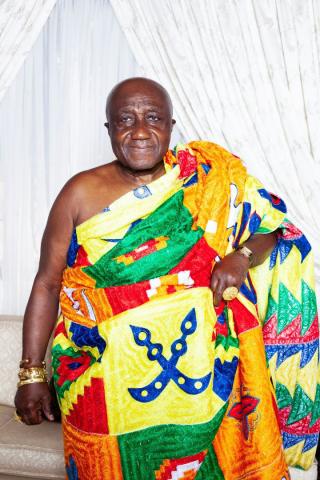
Empire Rising: The Dynastic History of Asante from 17th to 21st Century
Oheneba Akwasi Abayie
2025 Coit-Phelps Keynote Speaker
Since the first millennium, West Africa has witnessed the rise and fall of many a kingdom and empire, including Old Ghana, Old Mali, and Tukulor. Several other West African kingdoms have, however, withstood the test of time, evolving through complex and challenging historical processes. One such polity is the Asante Kingdom in present-day Ghana. The Kingdom of Asante forms part of the broader Akan ethnicity and boasts the last of all Akan polities to be founded in the late seventeenth century. Although the “youngest” of all the Akan States, Asante rapidly evolved as the most powerful Akan kingdom and one of the superpowers in coastal West Africa throughout the eighteenth and nineteenth centuries. According to the distinguished African historian Ivor Wilks, by the mid-nineteenth century, Asante had expanded so vastly, covering a territory bigger than present-day Ghana (Wilks, 1993: 203). Asante’s rapid expansion resulted from the military, diplomatic, commercial, and socio-political activities of its leaders, both kings and queens.

Black Ethnomusicology
Pedro Acosta
(English)
A proposal to enhance the production of black knowledge from communities of practice in Academic Management
Ethnomusicology, as a field of human sciences, plays an important role in the appreciation of black and indigenous cultures and sound-musical practices in Brazil and around the world. This paper aims to present the actions developed by the Executive Board of the Brazilian Association of Ethnomusicology (ABET). The intention is to give visibility to the production of black knowledge, not as an object of study, but rather as issues that occur in Black Ethnomusicology in Brazil, as this is the country with the largest black population outside of Africa and with a strong Black Movement that has been demanding public policies for reparations for more than 3 centuries of slavery, proposing racial quotas and affirmative actions.
Etnomusicologia Negra:
(Portuguese)
Uma proposta para potencializar a produção de conhecimento negro a partir de comunidades de prática em Gestão Acadêmica
A etnomusicologia, como campo das ciências humanas, desempenha um papel importante na valorização das culturas negras e indígenas e das práticas sonoro-musicais no Brasil e no mundo. Este artigo tem como objetivo apresentar as ações desenvolvidas pela Diretoria Executiva da Associação Brasileira de Etnomusicologia (ABET). A intenção é dar visibilidade à produção do conhecimento negro, não como objeto de estudo, mas sim como questões que ocorrem na Etnomusicologia Negra no Brasil, por ser este o país com a maior população negra fora da África e com forte presença negra e por ser um Movimento que reivindica políticas públicas de reparação há mais de 3 séculos de escravidão, propondo cotas raciais e ações afirmativas.
TBA
Emmanuel Agbeli | Mohamed Alidu | Ben Paulding | Emmanuel Attah Poku
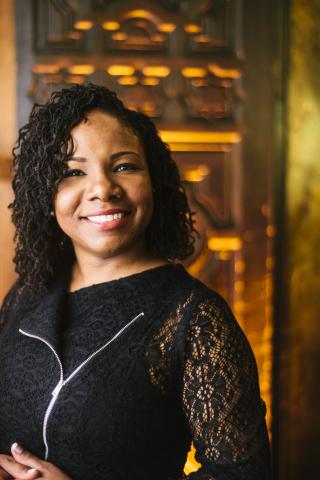
In the Flow and Against the Current: Disrupting the Praise and Worship Music Economy
Charrise Barron
Praise and worship music is a type of sacred music performed in Protestant churches throughout the world—across racial, ethnic, and national boundaries. White American composers and publishers dominate the praise and worship music industry. Thus, the soaring popularity of Nigerian gospel artist Sinach’s praise and worship anthem “Way Maker” was a significant intervention in the praise and worship music economy. This presentation explores the currents of praise and worship music in the United States and how African artists such as Sinach have disrupted and redirected the flow in recent years. As song texts carry theology to entire congregations, the music becomes a powerful pedagogical tool. Consequently, African, African American, and other African diasporic artists producing this music have the power to preserve music-making traditions and theological threads that have historically defined the music of Black churches. This presentation ultimately asks whether such artists are doing this preserving work.
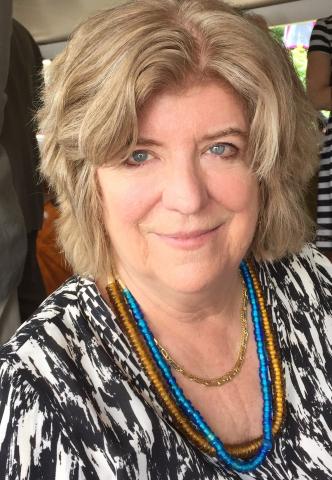
Studio recordings as ‘musical auracy’ in Mande kora: The impact of Toumani Diabaté’s albums on kora-playing
Lucy Durán
Mande griot music is one of the best-known oral traditions of West Africa. Since the 1970s, internationally published recordings of this music have proliferated, occupying an interesting space between fluidity and fixity in an oral culture. Studio recordings – (unlike literary works, they are rarely produced by ethnographers) - have become an accessible and important tool in the preservation and transmission of musical knowledge and style in Mande music. I call this process “musical auracy”, a kind of actively-engaged listening.
Drawing on the Symposium’s broad theme of ‘orality vs literacy’, this paper considers how kora players use recordings as a kind of aural book for learning and inspiration, and what impact this has had on their individual performance style, and on kora music and playing in general.
The kora, a calabash harp with 21 strings in two near-parallel rows, is indigenous to the Mande cultural region of West Africa. It has undergone dramatic transformations in construction, sound and playing technique over the past four decades. Arguably the most influential recording artist of the kora is Toumani Diabaté (1965-2024), who has recently passed away at the age of 58. This is a timely moment to assess his impact and legacy on kora playing in general.
My positionality in this analysis is as a rare example of an ethnomusicologist who is also a music-producer. My work producing albums is because I believe in the importance of creating materials that are more readily accessible than the book, focusing on notions of heritage which can be shared within the communities of practice. I know well both the kora and Toumani’s extended family (from Gambia and Mali), going back to 1977 when I began studying the kora with Toumani’s great uncle, Amadu Bansang Jobarteh in the Gambia, and working in Mali with a number of artists since 1987. I have music-produced six albums by Toumani including his debut and arguably most influential album, Kaira (1988) which was the first to feature solo instrumental kora performance on one kora, plus five more albums by him, one of which received a Grammy nomination in 2014 (Toumani & Sidiki). Through this lens, I will explore the impact of auracy of Toumani’s work on fixity or fluidity in kora music today.
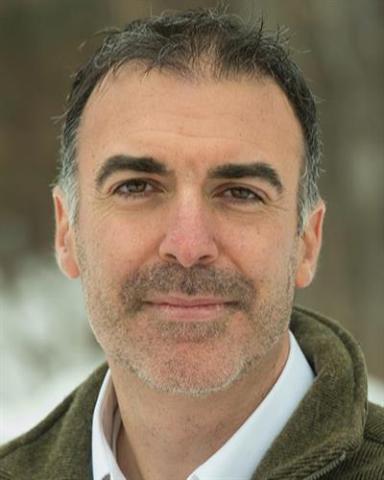
Ambiguities of Decoloniality in the Ethnography of Tunisian Stambeli
Richard Jankowski
Music ethnographers have persistently scrutinized our methods, outputs, institutional structures, and socioeconomic positionality in relation to the often profound power asymmetries between fieldworker and the communities of practice we study. From the landmark 1997 publication of Shadows in the Field to the recent push to decolonize music studies, discussions of positional disparities once relegated to the background have taken center stage in scholarly discourse in the field. Reflecting on my years learning from the ritual community practicing stambeli—a music-driven trance healing practice of Black Tunisians—I consider the implications of different worldviews and systems of knowledge encountering each other, as well as the ambiguities that emerge when the broad ideals of decolonization meet the messy realities of lives constrained by specific socioeconomic and political circumstances in the field. I consider these ambiguities in relation to my current collaborative digital humanities project to create a locally based digital resource providing the community and the wider public with an accessible archiving, research, and education tool dedicated to stambeli. The project was instigated by a senior stambeli musician who fears that stambeli musical, ritual, and historical knowledge—including some of his own that has already disappeared from circulation—is in danger of being lost, particularly amidst state-sponsored racist hostility and post-Revolution Islamist pressures that threaten ritual healing practices. I ask whether the ethnographic digital humanities hold promise for social justice and decolonial action, and whether its success hinges on the technological potential to mediate oral and textual forms of knowledge transmission.
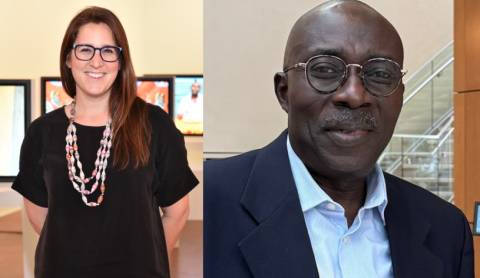
Restoring Our Soul: Fowler Museum’s Restitution to the Asante Kingdom in Ghana
Erica Jones & Kwasi Ampene
Early in February 2024, the Fowler Museum at UCLA became the first American institution to permanently return seven objects to the Asante Kingdom in Ghana. The objects were among many taken or extorted by the British Army during the 1874 Sagranti War (Sir Garnet Wolsley’s War) when households and the King’s Palace in Kumase were looted and burnt down. The return of the seven objects coincided with the 150th Anniversary of the Sagranti War and on Thursday, February 8, the objects were presented to the Asante King, Otumfuo Osei Tutu II, and the people of Asanteman during a commemoration event on the palace grounds. In this joint presentation, Jones and Ampene will discuss how the objects got to the Fowler Museum, the process of restitution, institutional bottlenecks at UCLA and in the US, negotiating international laws, tensions, shipping and clearing at Air Cargo in Accra-Ghana, and the final presentation in Kumase.
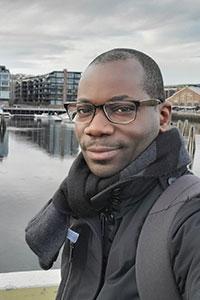
African Music and Dance Performance in the American Liberal Arts College
Damascus Kafumbe
As a teacher at a liberal arts institution, my pedagogy revolves around the notion of empowering the whole person, which means that students set personal markers of success that reflect how retention and application of the course content are meaningful for them. This approach inherently challenges students to connect their education to living in the broader communities which they become involved in and fosters skills that apply to a wide range of fields. During the past twenty years I have developed and offered African Music and Dance Performance, a course and an ensemble that currently gives liberal arts college students these educational experiences. Enrolled students primarily learn, as an ensemble, by doing. The immersive, collective, and hands-on course takes place over twelve weeks and culminates in an end-of-semester concert that is open to community members. My presentation will focus on how this process hones students’ abilities to interact with other people. As I will demonstrate, my objective as an instructor is not to simply produce African music and dance performers. It is also to help students understand how they can draw on modes of African musical performance to engage and positively impact their surroundings. I argue that engaging in experiential learning is one of the most effective ways students can develop skills or hone their capacities to build and engage communities. My discussion draws on my in-class and out-of-class interactions with students for two decades and considers Stefano Harney and Fred Moten’s work (Harney and Moten 2013).
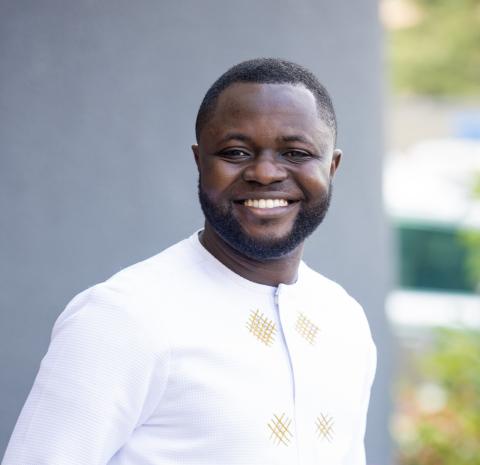
Living with Water: Nzulezo and the Making of Aquatic Geographies for Survival
Nana Kesse
Why did people choose to live in the middle of bodies of water instead of land, and how have these communities survived in such watery ecologies over time? In this presentation, I examine these questions using the Nzulezo community as a historical case study. Nzulezo is the only stilt- house (or lake-dwelling) community in Ghana and one of the few in Africa, with a history dating back to the mid-eighteenth century. For over two centuries, the people of Nzulezo have lived in the middle of the Amanzule River, sharing the river space with animals like crocodiles, pythons, and fish, while enduring challenges such as seasonal flooding, the Atlantic slave trade, and European colonialism. What conditions and mechanisms have allowed the Nzulezo to survive in the Amanzule waterscape, and how does their story illustrate what it means to live on and with water over time? I argue that the people’s survival is a result of an evolving process of colonizing and reconfiguring the Amanzule water space into idiosyncratic aquatic geographies for humans, animals, and plants. The Nzulezo’s water-centered approach to spatial organization challenges longstanding, land-centric views about territoriality, especially in precolonial Ghana. In my presentation, I will also describe my seven-year relationship with the Nzulezo community, revealing how the people, an archetypical African community of practice, accepted me into their society and educated me about their history, customs, beliefs, and practices. This warm welcome and education granted me access to valuable historical, anthropological, and ecological data about the community, which I analyze and translate into scholarly theses for both academic and non-academic audiences.
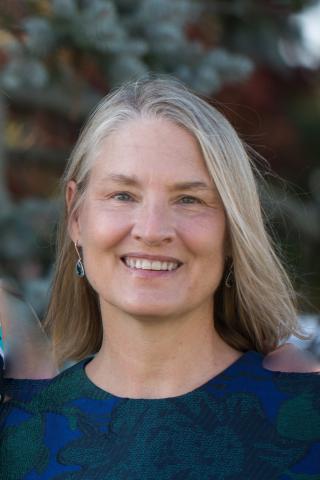
Working with Malian Bala Artist Neba Solo: Developing the Most Ethical Path
Ingrid Monson
In this presentation I describe my process of working with Malian Bala artist and composer Neba Solo, a celebrated and highly decorated musician from the Sikasso region of Mali. After nearly 20 years I have completed the manuscript The Voice of Kenedougou: Neba Solo and Senufo Sensibility in Malian Music, which will be published by Oxford University Press in the next year. The book deeply explores the ethical sensibility developed in Neba Solo’s lyrics and their cultural continuity with Malian historical and cultural sensibilities of what it is to be a good person (mɔgɔya). This exploration has taken place against the backdrop of Mali’s three coup d’etats since 2012, and the current transitional government’s urgent work towards a Mali Kura (New Mali) built on African principles. In this talk the asymmetries between me, as a Western white researcher, and Neba Solo are explored as well as how Mali’s own ethical values shaped my attempts to ethically bridge the gap.
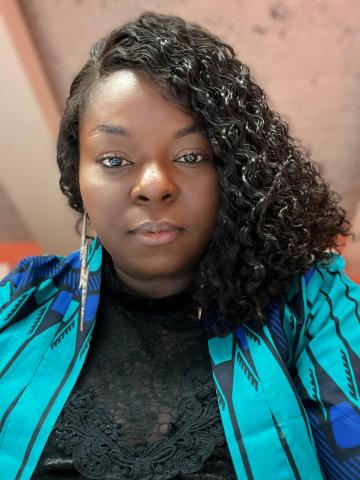
Her Beat, Her Story: A Woman’s Reflection on Practice and Learning in African Music Research
Ruth Opara
As an African woman who is a music practitioner and music scholar, I often find myself questioning which voices to highlight in my work and navigating the complexities of authority and authenticity. Who holds knowledge in music performance spaces, or better put, who is learning from whom? By examining two ethnographic sites—one involving girls and the other, mothers—I juxtapose my experiences with theirs, reflecting on how musical knowledge flows within our communities. In these encounters, I confront the longstanding orality-literacy divide, a notion born from colonial constructs that often misrepresents and undermines African knowledge systems, especially women’s perspectives. I aim to show that African Women’s music is a living, evolving practice that challenges these simplistic classifications. My experiences in performance spaces reveal how deeply rooted and complex these interactions are, teaching me as much as I teach others. I advocate for a decolonized approach to representing African musical experiences, one that respects and centers the voices of African women and girls. By sharing my story, I hope to contribute to a research methodology that honors and makes space for all voices involved in our shared musical knowledge.
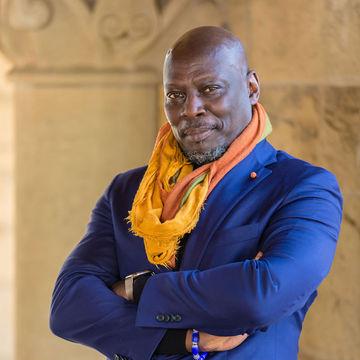
The Music and Soundscapes of African Literature
Ato Quayson
African literature is full of sounds. From the sounds of the marketplace where the people of Umuofia meet in Achebe’s Things Fall Apart to the persistent sound of constant drumming in Wole Soyinka’s Death and the King’s Horseman, and the jazz-infused narration of Fiston Mwanza Mujila’s Tram 83, there is much to learn about the role of sounds an of music in modulating the themes of African Literature. My paper will be focused on exploring this with reference to the three writers just mentioned, but also with reference to works by Tayeb Salih, Ama Ata Aidoo, Chimamanda Adichie, Tsitsi Dangarembga, and various others.
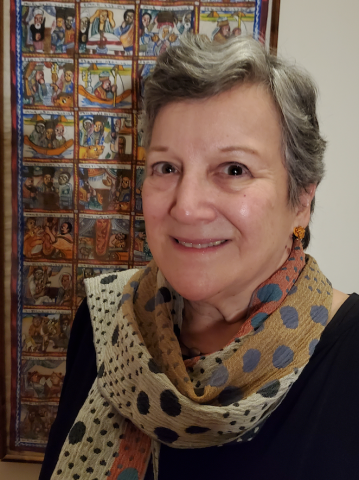
When Communities of Practice are the Primary Communities of Learning: The Case of Ethiopian Orthodox Christianity
Kay Kaufman Shelemay
The ancient Ethiopian Christian liturgical language G∂‘∂z, it’s literary corpus, and liturgical musical tradition have been sources of interest among European scholars since the first work by Frankfurt- born Hiob Ludolf (1624-1704). However, a deep tradition of written and oral transmission predated by centuries the European engagement with Ethiopian literature and liturgy; indeed, the European initiative in Ethiopian studies by Ludolf rested on the European scholar’s encounter and work with highly educated Ethiopian monks in Europe.
This paper will discuss the inseparable relationship between oral and written transmission in the Ethiopian Orthodox Church, and the manner in which the highly trained Ethiopian clergy transmitted their liturgy and its musical content through indigenous oral and written processes long before European scholars entered the scene. Indeedthe Ethiopian clergy made heroic efforts to preserve their liturgical and manuscript tradition following a devastating Muslim conquest of Ethiopian in the first half of the sixteenth century, when clerics developed a system of indigenous musical notation based on the G∂‘∂z syllabary. This paper will discuss the role of Ethiopian clergy as the primary community of practice as well as the primary community of learning , a dual role that has continued into the present. This paper will provide some background commentary on the expertise of past and present Ethiopian Christian musicians and the manner in which foreign scholarship has always depended on indigenous knowledge, including the publications of this presenter.
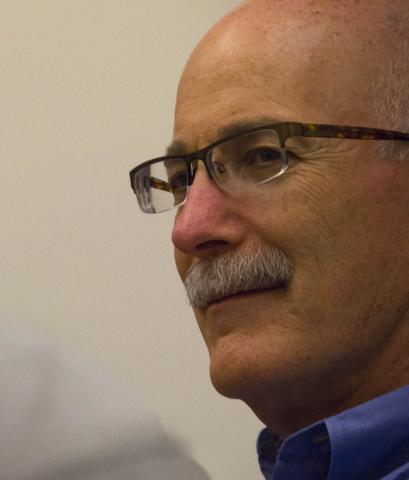
Exhibition as Translation: Reflections on Collaborative Curation in Ghana
Raymond Silverman
How does one document a creative process? How does one pursue understanding the material and immaterial aspects of production. How does one apprehend the significance of why and how something is made? Having acquired an understanding of a creative process, how does one go about interpreting this knowledge for a museum audience?
Exploring these questions is the subject of this paper. The vehicle for our analysis is a research project undertaken in 2006, in the community of Krofrom (Ghana), a town dedicated to the manufacture of brass objects, that culminated in the museum exhibition, “Casting Tradition: Contemporary Brassworking in Ghana” (2008-09). Focused on contemporary practice, our research and curatorial efforts sought to present the activities of living artisans in Krofrom that celebrates the maker as a creative individual, while at the same time providing historical context for their work.
The paper examines the dialogue between a community of practice (brass artisans of Krofrom) and a community of learning (Ghanaian and American curators/scholars), a collaboration that presented its participants with a multitude of challenges and opportunities. At its core is the argument that such projects are exercises in translation, a multivalent process of observation, participation, conversation and interpretation that culminates in the production and sharing of knowledge.
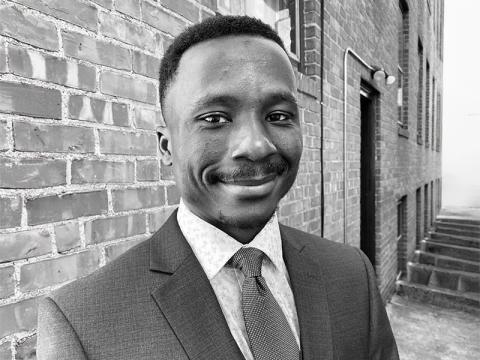
Deepening the Chronologies of Global Urbanism; the Role of Asante Community of Practice
Tony Yeboah
From Kumase’s early life in the seventeenth century to recent decades, we see how Asante have constructed an understanding of their urban realities by interrogating local systems of value and needs. Yet normally, discussions about urban development in the city, are deeply situated within European colonial enterprise and local responses and appropriations. I admit that this is not peculiar with Kumase but virtually all cities that experienced European colonialism in the nineteenth and twentieth centuries. And this has aligned with the divide in urban history where cities in the Global North are used to theorize “cityness” for those in the Global South. Similarly, it has engendered an understanding of the urban past where creativities and inventiveness are mostly, if not always, associated with cities in Europe while those in the Global South are recognized as recipients of these urban designs, conceptions, and socio-political innovations. Within the academy, scholars’
overemphasis on sources produced by colonial governments could partly explain this normative telling of colonial cities from this entangled perspective. Nonetheless, if we deepen the scope of our methodology and sources, scholars can associate creative urbanism with Africans and regions that experienced colonialism, and in a way, challenge the linear, teleological nature of progress when it comes to urban history. In this paper, I show the values of centering historical knowledge from Asante community of practice or recognized knowers of the past to demonstrate the vibrancy and balance of the region’s urbanism in the centuries before colonization and its potential for our understanding of urban formation particularly in the nineteenth and twentieth centuries.